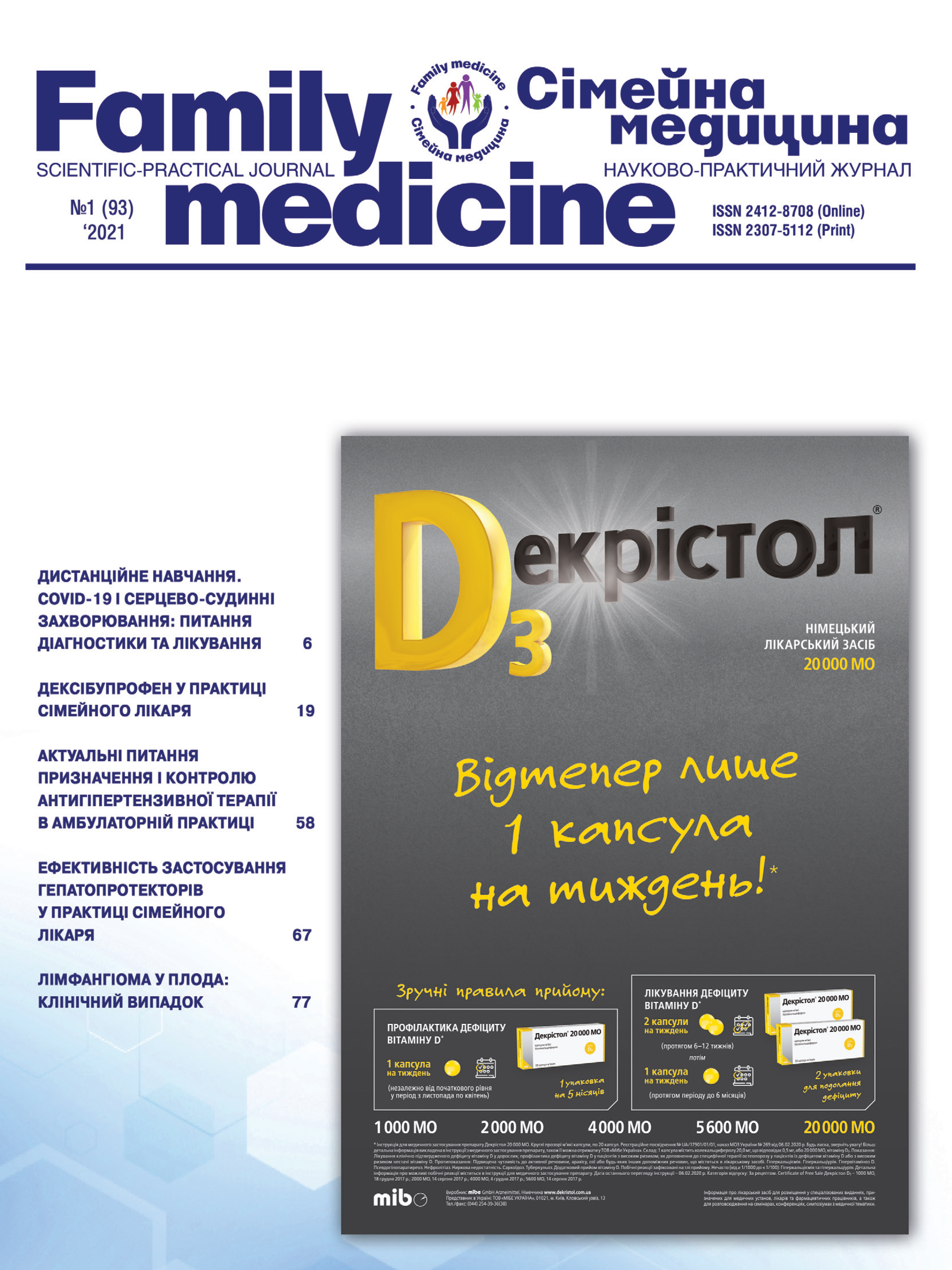Current Issues of Purpose and Control of Antihypertensive Therapy in Outpatient Practice (Clinical Case)
##plugins.themes.bootstrap3.article.main##
Abstract
The World Health Organization identifies hypertension (AH) as «the world’s leading global risk of increased mortality from cardiovascular disease». AH is one of the most serious health problems because of its prevalence and importance. Caring for a patient with AH with or without chronic comorbidity requires a long-term holistic, patient-centered approach. The goal of treating a patient with AH is to reduce the overall cardiovascular risk, notu jst to control blood pressure.
The aim is to analyze the possibilities of basic drug therapy and control over its implementation in patients with hypertension in different clinical situations in the practice of a family physician.
Newly detected AH in a patient requires careful examination and appointment of effective comprehensive treatment. The tactics of selection of antihypertensive treatment for a patient with newly diagnosed hypertension are considered on a clinical example. Improving lifestyle and healthy living habits are necessary for all patients with AH, even when antihypertensive medication is mandatory. It is important to regulate blood pressure. The choice of medication depends on the patient’s characteristics and comorbidities.
Care of a patient with hypertension should be carried out holistically with the identification and control of additional risk factors and complications, in parallel with the control of hypertension. At the same time it is necessary to take care of the treatment of some other somatic diseases or mental disorders that may affect the outcome of treatment of hypertension.
##plugins.themes.bootstrap3.article.details##

This work is licensed under a Creative Commons Attribution 4.0 International License.
Authors retain the copyright and grant the journal the first publication of original scientific articles under the Creative Commons Attribution 4.0 International License, which allows others to distribute work with acknowledgment of authorship and first publication in this journal.
References
Бабінець Л.С., Білочицька В.В. Клініко-лабораторні та інструментальні особливості гіпертонічної хвороби у поєднанні з облітеруючим атеросклерозом нижніх кінцівок в амбулаторній практиці // Здоров’я суспільства. – 2019. – Т. 8, № 1–2. – С. 30–35.
Наказ МОЗ України від 13.06.2016 № 564 «Уніфікований клінічний протокол первинної, вторинної (спеціалізованої) та третинної (високоспеціалізованої) медичної допомоги. Профілактика серцево-судинних захворювань».
Сімейна медицина: реалії та перспективи / Навчальний посібник [Бабінець Л.С., Боровик І.О., Корильчук Н.І. та ін.]; за ред. Л.С. Бабінець. – 3-тє вид., доп. і перероб. – Тернопіль: ТНМУ, 2020. – 1162 с.
Сіренко Ю.М., Рековець О.Л. Методи вимірювання артеріального тиску лікарями та пацієнтами // Артериальная гіпертензия. – 2018. – № 2 (58). – С. 23–25.
ESH/ESC Guidelines for the management of arterial hypertension / The Task Force for the management of arterial hypertension of the European Society of Hypertension (ESH) and of the European Society of Cardiology (ESC) // Journal of Hypertension. – P.1281–1357.
Hypertension Canada’s Guidelines for Diagnosis, Risk Assessment, Prevention, and Treatment of Hypertension in Adults // Canadian Journal of Cardiology. – 2017. – Vol. 33. – P. 557–576.
Milica Katić, Igor Švab. Family medicine. Izdavač: Medicinska naklada, Zagreb;2017;512; 53–68.
Petek-Šter M. Arterijska hipertenzija. U: Švab I, Rotar-Pavlič D. Družinska medicina (Family Medicine). – Ljubljana: Združenje zdravnikov družinske medicine (Association of Family Physicians), 2012. 9-16: 61–73.
The Finnish Medical Society Duodecim https://www.duodecim.fi/
Verughese J, Chattopadhyay SK, Proia KK, et al. Economics of self-measured blood pressure monitoring: a community guide systematic review. Am J Prev Med. 2017;53(3):105–113.





